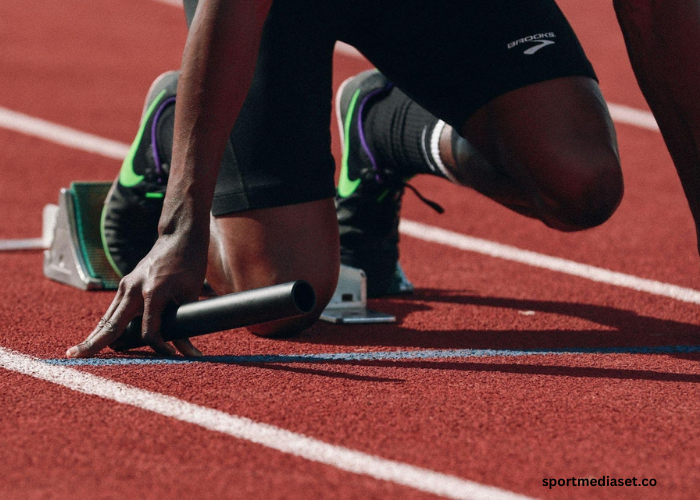In the competitive world of sports, where athletes constantly strive for excellence and push their limits, understanding the critical role of recovery is essential. Often, athletes focus primarily on intensifying their training sessions, overlooking the importance of the recovery phase. This oversight can lead to decreased performance, higher risk of injury, and increased fatigue. However, by integrating a range of recovery techniques — as mentioned in this blog — into their routine, athletes can boost their performance, speed up muscle repair, and ensure their bodies are well-prepared for upcoming challenges.
Active Recovery
Active recovery might initially seem paradoxical — using physical activity to recover from physical exertion. Yet, this approach is a cornerstone of effective recovery strategies. Active recovery includes participating in low-intensity physical activities such as gentle jogging, swimming, or cycling. This type of movement promotes blood flow, aiding in the elimination of lactic acid build-up in the muscles, thus reducing soreness and enhancing flexibility. It allows athletes to remain active, aiding their bodies in the recovery process without overexertion.
Proper Hydration
Maintaining hydration is paramount for athletes, not only during competition and training but also as part of the recovery process. Adequate fluid intake ensures that the body functions optimally, helps prevent cramps, and facilitates the transport of essential nutrients to the muscles, aiding in repair and recovery. Athletes should focus on replenishing fluids lost through sweat and maintaining a balance of electrolytes, which are crucial for muscle function and recovery.
Sleep and Rest
Quality sleep is a fundamental aspect of any athlete’s recovery regimen. During sleep, the body undergoes various repair processes that are critical for muscle recovery, cognitive function, and overall well-being. Incorporating practices that enhance sleep quality, including the consideration of supplements like delta sleep-inducing peptide, can be beneficial. This peptide is known for its potential to improve the quality of sleep, but it’s prudent to seek medical advice before incorporating any such substances.
Nutrition and Supplements
A balanced diet plays a crucial role in an athlete’s recovery. Consuming the right balance of proteins, carbohydrates, fats, vitamins, and minerals supports muscle repair, replenishes energy stores, and reduces inflammation. Supplements can also play a role in filling nutritional gaps and providing additional support for recovery. For instance, protein supplements can aid in muscle repair, while omega-3 fatty acids can help reduce inflammation, supporting quicker recovery.
Stretching and Flexibility Exercises
Regular stretching and flexibility exercises are vital for maintaining muscle health and preventing injuries. These practices can improve blood flow to the muscles, enhance flexibility, and reduce post-exercise soreness. Incorporating a routine of dynamic stretches before workouts and static stretching afterward can help in maintaining a range of motion and reducing the risk of muscle tightness and strains, contributing to more effective recovery and overall athletic performance.
Foam Rolling and Self-Myofascial Release
Foam rolling, a form of self-myofascial release, is an effective tool for enhancing recovery. By applying pressure to specific points on the body, athletes can alleviate muscle tightness, soreness, and inflammation. This technique improves blood circulation and flexibility, aiding in the recovery process and preparing muscles for future training sessions. Regular use of a foam roller as part of a recovery routine can significantly reduce the risk of injury and improve athletic performance.
Cold Therapy
Cold therapy, including ice baths and cryotherapy, plays a crucial role in post-exercise recovery. By exposing the body to cold temperatures, athletes can reduce muscle inflammation and soreness, accelerating the recovery process. This technique is particularly beneficial after intense workouts or competitions, helping to quickly restore the body to optimal condition. Cold therapy not only aids in physical recovery but also invigorates the mind, preparing athletes for the mental challenges of their sport.
Heat Therapy
Contrasting with cold therapy, heat therapy involves applying heat to relax and loosen tight muscles, thereby improving blood flow and aiding in recovery. Techniques such as hot baths, saunas, or heat packs can soothe muscle stiffness and enhance flexibility, making them a valuable component of the recovery process. Heat therapy is especially beneficial for chronic aches and pains, helping athletes maintain a consistent training regimen.
Compression Gear
Compression clothing has become a staple in athletes’ recovery arsenals. By applying gentle pressure to the muscles, compression gear improves circulation, stabilizes muscle tissue, and reduces swelling and fatigue. Wearing compression garments during and after workouts can hasten recovery times and improve overall performance, making them an indispensable tool for athletes across disciplines.
Mental Recovery Techniques
Recovery is not solely a physical endeavor; mental rest and rejuvenation are equally important for peak performance. Techniques such as meditation, yoga, and mindfulness can reduce stress, enhance focus, and improve mental resilience. By incorporating these practices into their recovery routines, athletes can address the psychological demands of their sport, ensuring they are mentally prepared to face challenges both on and off the field.
Hydration Therapy
Advanced hydration methods, such as IV hydration therapy, offer a rapid means of replenishing fluids, electrolytes, and vitamins depleted during intense physical activity. This technique ensures that athletes quickly achieve optimal hydration levels, supporting faster recovery and preparing the body for subsequent exertion. While not a replacement for regular fluid intake, hydration therapy can be a valuable tool in specific situations, particularly for athletes recovering from extreme dehydration.
Technology-Assisted Recovery
Emerging technologies offer innovative solutions for enhancing recovery. Electrical Muscle Stimulation (EMS) and Transcutaneous Electrical Nerve Stimulation (TENS) are two examples that can accelerate recovery, relieve pain, and improve muscle function. By stimulating muscles and nerves through electrical impulses, these technologies aid in the recovery process, allowing athletes to return to training sooner and with improved capability.
Conclusion
Recovery is an art that requires as much dedication and precision as training itself. By integrating a variety of recovery techniques—from foam rolling and cold therapy to advanced technology-assisted methods—athletes can ensure their bodies and minds are optimally prepared for the rigors of competition. The key to effective recovery lies in understanding the unique needs of one’s body and mind, adapting techniques accordingly, and maintaining a consistent recovery regimen. As athletes continue to push the boundaries of human performance, the role of sophisticated recovery strategies becomes increasingly vital, not just for success but for the sustainability of their athletic careers. Embracing a holistic approach to recovery allows athletes to achieve balance, enhance performance, and ultimately, realize their full potential.




